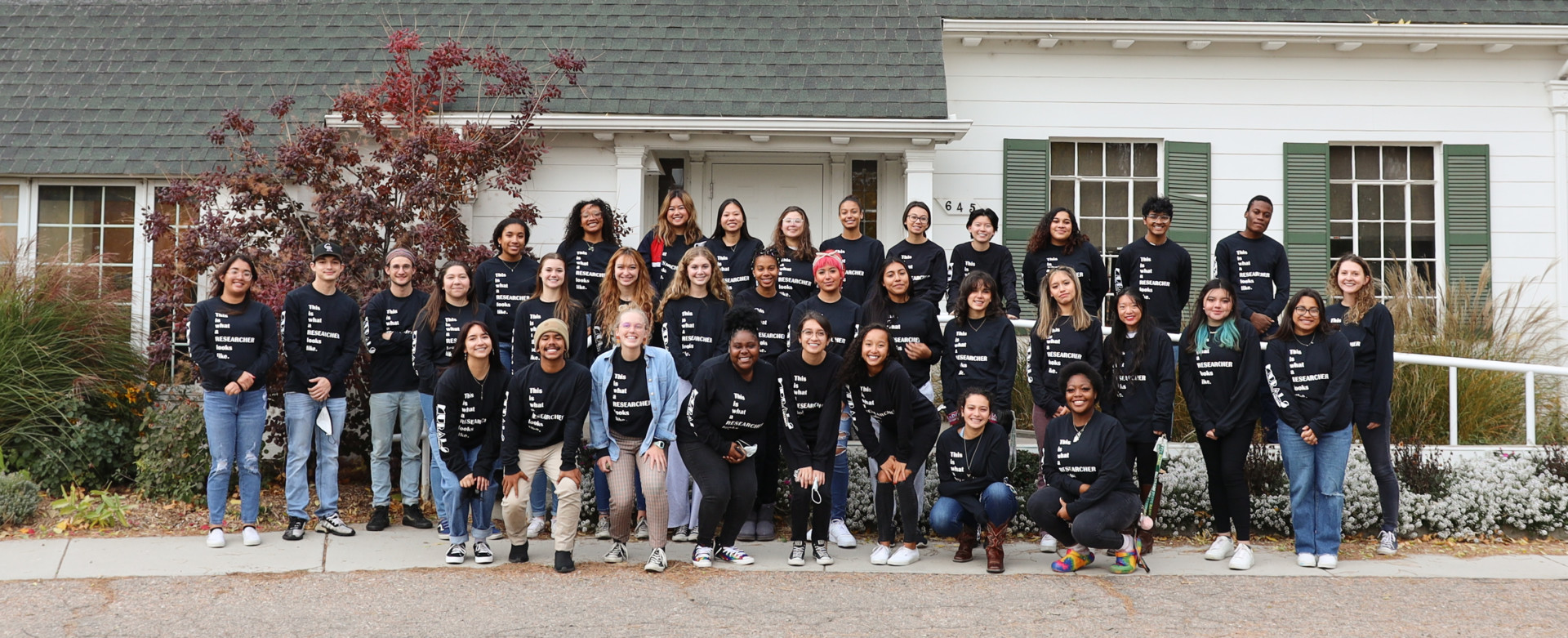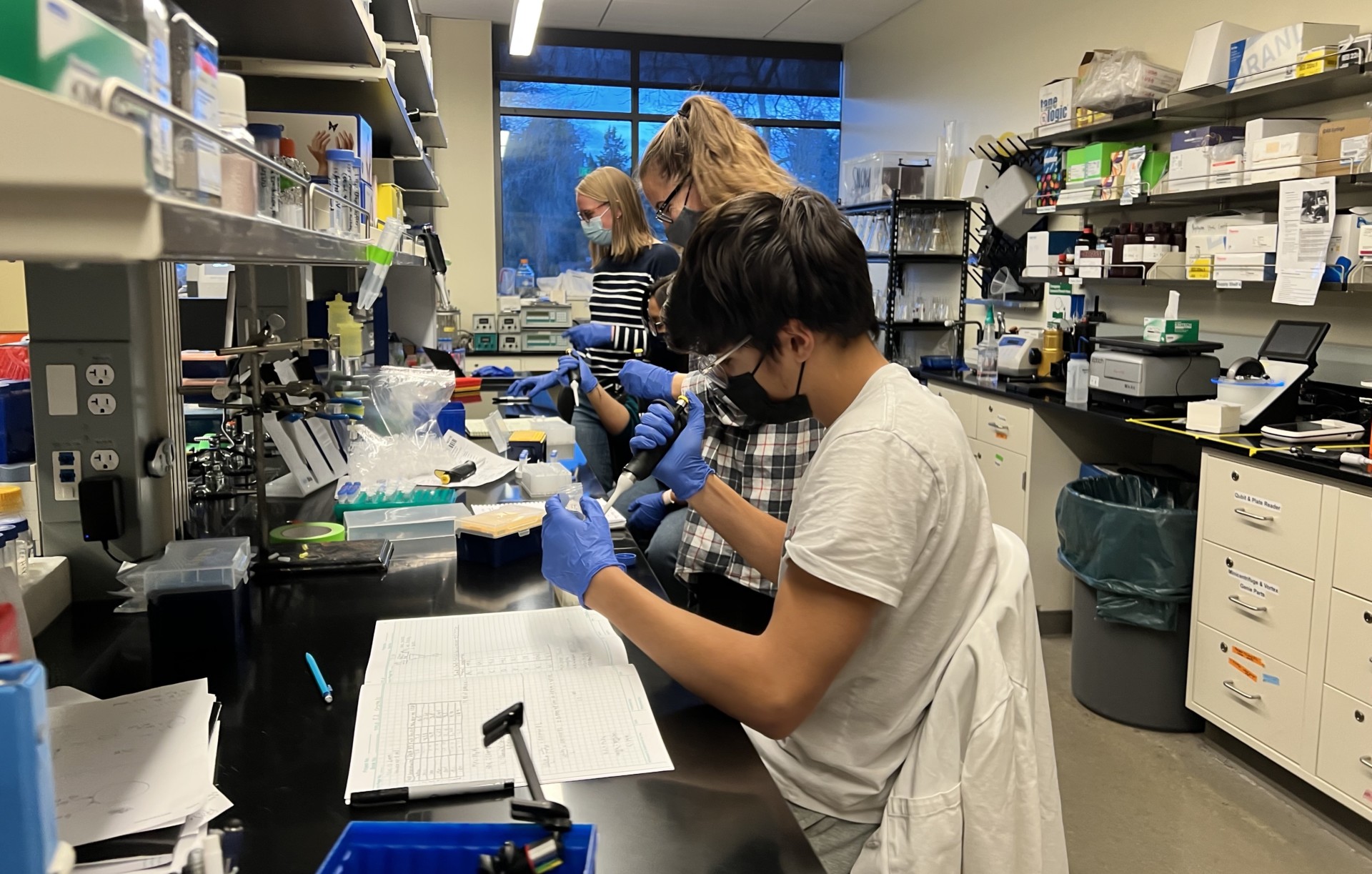
Students in the lab of Chris Snow, associate professor in the Department of Chemical and Biological Engineering.
Colorado State University launched a new pilot program this fall to get first-year students of color more involved in undergraduate research, boosting their engagement and retention rates.
The program is an extension of the CSU System’s student success initiatives and has been funded through resources from the CSU Board of Governors aimed at increasing retention rates and closing opportunity gaps.
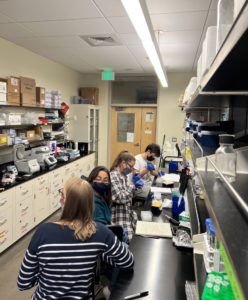 The program was started as an extension of MURALS, the Multicultural Undergraduate Research Art and Leadership Symposium started in 2015, in which students of color are mentored in research by faculty and graduate students, culminating in presentations of their scholarly work each spring.
The program was started as an extension of MURALS, the Multicultural Undergraduate Research Art and Leadership Symposium started in 2015, in which students of color are mentored in research by faculty and graduate students, culminating in presentations of their scholarly work each spring.
High persistence rate
The MURALS First-Year Scholars Academy piloted this fall aimed to boost the number of first-year students involved in MURALS, since historically first-year students have accounted for a small percentage of MURALS participants, according to Bridgette Johnson, assistant vice president for inclusive excellence.
“Typically, less than 18% of MURALS participants are first-year students,” she said. “But over the last seven years, their persistence to the next fall has been over 95%. So if we can get more first-year students participating in MURALS, we’ll more than likely have a better chance of helping them navigate the academic journey.”
Johnson added that it’s key for students to work with faculty to apply what they have learned.
“It has been proven that when students have consistent positive engagement opportunities with faculty, like an undergraduate research experience, they are much more likely to succeed,” she said. “One student shared that MURALS made their education come to life. She said her education came to life because she was able to apply learned knowledge in a way she could physically see and comprehend.”

About the academy
In the academy, which started Oct. 18, students meet with their faculty mentors at least twice a week, and they provide a weekly report to the MURALS team. Each student will present a report on their research work at the MURALS event next spring, and both the faculty mentors and the mentees receive a stipend at the end of the academic year for their participation. Johnson said the academy had 56 first-year students this fall, and plans call for expanding the program next fall from eight weeks to 12 weeks.
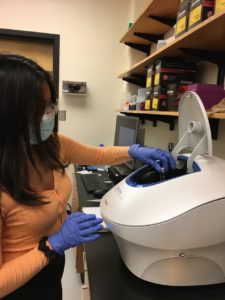
One of the first-year students who participated in the pilot this fall, Jimena Firo Becerril, is a business major, but she also has a passion for math and science, so she jumped at the chance to engage in chemistry research with Assistant Professor Justin Sambur and his Ph.D. student Dani Lustig.
“I was very happy to do something in the chemistry world, which I’m passionate about, but that first meeting with them was humbling,” Firo Becerril said with a laugh. “I normally have some sense of what people are talking about, but in my first meeting here, there was truly not a single sentence where I knew what they were saying. It was definitely an eye-opener, and it was a challenge I really wanted to embrace.”
Now, after the eight-week program, Firo Becerril can easily explain the research, which involves nanophotonics. The researchers are testing how energy flows between nanocrystals and molecules. The team is trying to identify essential characteristics of these nanocrystal-molecule building blocks that could lead to more efficient and powerful solar cells or light bulbs, for example.
‘More personal’
“I love what I’ve been doing,” Firo Becerril said. “I want to pursue a doctorate, and this lets me see what that doctoral world is like — how a mentor talks to a mentee, for instance. It’s different from a traditional classroom, it’s more personal. You definitely grow as a learner and a person.”
Lustig agreed.
“The MURALS academy has given her the opportunity to see what a graduate student does day-to-day in the lab,” she said. “She is learning the research and the process, and I think it’s a really great opportunity that might not have come her way otherwise. I love working with Jimena. She’s super passionate and eager to learn, and it’s just been a really great experience for both of us.”
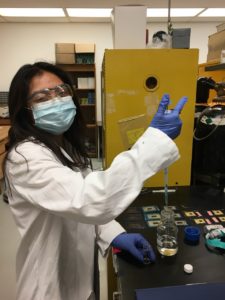
Sambur said that programs like this benefit the quality of the work as well.
“There’s evidence that diverse teams do better science, period,” he said. “That means bringing together people from different backgrounds, opinions and fields, like economics, to engage in cutting-edge research.”
He added that Lustig benefits from the program too.
“Dani is interested in pursuing a career in academia, so this is great experience in mentoring, and her scientific communication has to be on point because she’s talking to someone who is not a chemistry major,” he said. “Dani has to drop the jargon and explain the work in clear and creative ways.”
Streamflow tracking
Aditi Bhaskar, an assistant professor in the Department of Civil and Environmental Engineering, is mentoring several students in the new MURALS academy. The students are tracking streamflow along Spring Creek and its tributaries.
“It gives them a way to interact with faculty differently than they would in a class, and learn about working on a research project, which is very different from working on a homework assignment,” she said. “We don’t know what they’re going to find before we set them out on this fieldwork.”
Bhaskar also explained that the program helps retain students of color.
“I’m hoping it builds their sense of belonging in a science and engineering research community, and that their sense of identity and belonging will insulate them from other factors that might take away from that sense of belonging,” she said. “Maybe they’re the only student of color in a class; I’m hoping this experience will provide something to counter that.”
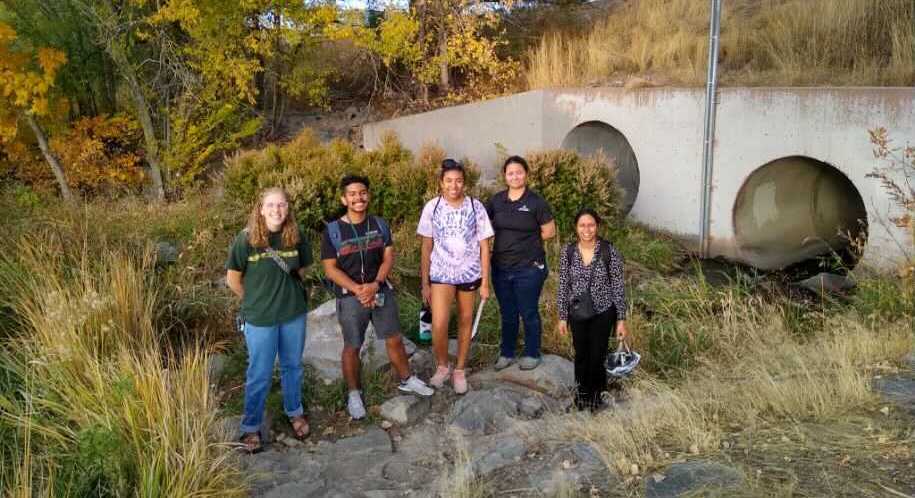
Assistant Professor Aditi Bhaskar of the Department of Civil and Environmental Engineering, right, is working with her mentees on measuring streamflow along Spring Creek. From left are Arysa Puckett, Sam Carles, Genesis Lacy and Dixie Poteet.
Excitement about research
Arysa Puckett, who is majoring in ecosystem science and sustainability, is one of Bhaskar’s mentees in the program.
“Getting hands-on experience and understanding what research is has definitely encouraged me,” she said. “Everyone I’ve talked to in MURALS is very excited about research, and I think that’s a pretty good indicator of how the academy is doing.”
Another of Bhaskar’s mentees, Sam Carles, is an environmental engineering major.
“When you’re doing research, it’s a good place to explore your weaknesses and strengths, especially as a first-year student,” he said. “When you’re done with it, you know what you can bring to the table and what you’re good at. And knowing that part of yourself is going to be crucial in acquiring a good job that you like. It’s good for you, the company you join and the professor you’re working with.”
The Office of Inclusive Excellence is encouraging members of the CSU community to learn more about how they can participate in MURALS and the new academy.
